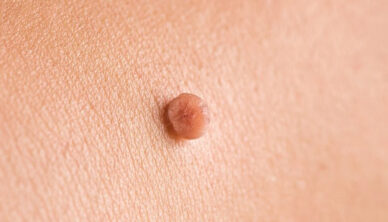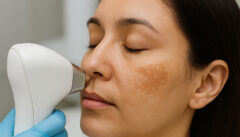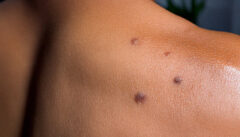Contents
Skin Tags

We provide specialist diagnosis and treatment for eczema, helping patients manage symptoms and prevent flare-ups.e offer quick, painless, and effective skin tag removal using the latest medical techniques
What are Skin Tags?
Skin tags (acrochordons) are small, soft, benign growths that form on the skin. They are typically flesh-colored or slightly darker, and they often appear in areas where the skin folds, such as:
- Neck
- Eyelids
- Armpits
- Groin & Under the Breasts
- Underarms
Skin tags are harmless and not cancerous, but they can become irritating, uncomfortable, or cosmetically bothersome, leading many people to seek removal.
Potential Causes
While the exact cause of skin tags is not fully understood, several factors may contribute to their development:
- Friction & Skin Rubbing – Common in areas where skin folds or clothing rubs.
- Hormonal Changes – More frequent during pregnancy.
- Obesity & Weight Gain – Increases skin friction and folds.
- Genetics – Family history may increase the likelihood of developing skin tags.
- Diabetes & Insulin Resistance – Associated with higher rates of skin tags.
- Aging – More common in middle-aged and older adults.
Signs & Symptoms
- Small, soft, hanging growths – Often attached by a thin stalk (peduncle).
- Painless & Non-Cancerous – Usually do not cause discomfort unless irritated.
- Changes in Size or Color – May enlarge or darken over time.
- Bleeding or Irritation – If caught on clothing or jewelry.
Although skin tags are harmless, any sudden changes in size, color, or texture should be evaluated by a dermatologist to rule out other skin conditions.
Diagnosis
- Visual Examination – A dermatologist can diagnose skin tags based on their appearance.
- Dermatoscopy – A close-up skin examination to confirm the growth is benign.
- Biopsy (Rare Cases) – If the growth appears unusual or changes rapidly, a biopsy may be performed.
Skin Tag Removal Treatments
- Cryotherapy (Freezing) – Liquid nitrogen is applied to freeze and remove the skin tag.
- Electrocautery (Burning) – A heated probe safely burns off the skin tag.
- Surgical Excision – The skin tag is cut off using sterile instruments.
- Ligation (Tying Off) – A medical thread is used to cut off the blood supply, causing the tag to fall off naturally.
Our specialist dermatologists will recommend the best removal method based on size, location, and patient preference.
Aftercare and Follow-Up
- Minimal Recovery Time – Most treatments require little to no downtime.
- Mild Redness or Scabbing – Temporary, and typically heals within 1-2 weeks.
- Avoid Scratching or Irritating the Area – To prevent infection and scarring.
- Apply Healing Ointments if Advised – To aid faster recovery.
Skin tags do not usually grow back, but new ones may develop over time. Regular skin checks can help detect and remove them early.
Arranging To Visit A Private GP

If you’d like safe and professional skin tag removal, then you can make an appointment with one of our private GPs who can refer you to our specialist dermatologists. Appointments are available to everyone and can often be booked for the same day. There is no need to be registered with our The Royal Buckinghamshire Hospital, or live locally.
If you have insurance which covers a GP visit, we can in most cases invoice the insurer directly. Where you are paying directly, the cost for a 30 minute consultation is £100.
Any additional costs will always be discussed. They could apply if you are referred for an MRI scan, or to a consultant, or for other agreed decisions to support your health.
Our Resident Private GP
Dr Chamali is welcoming and highly experienced. He offers his patients sound diagnosis and treatment, along with individual care focused on their future health.
24 March 2025




